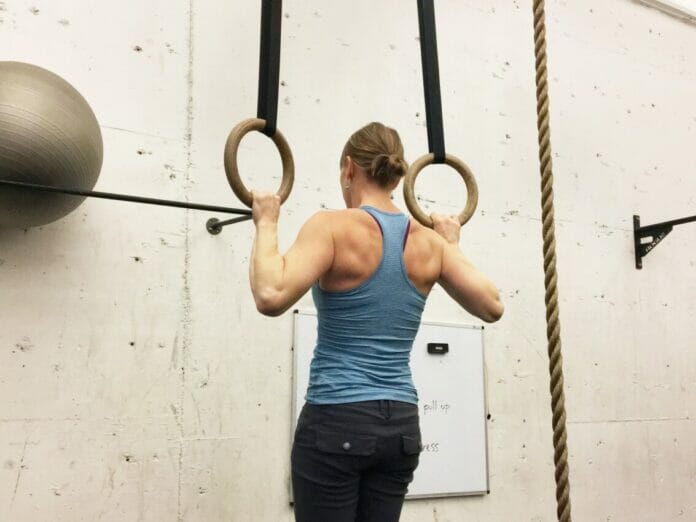What To Know
- The first step in treating a rotator cuff injury is to rest the shoulder and give it time to heal.
- Whether it’s playing tennis, going for a run, or simply taking a walk in the park, getting back to your active lifestyle will help you feel like yourself again.
If you’ve suffered a rotator cuff injury, you may feel like giving up on your active lifestyle altogether. But don’t despair – there are plenty of ways to get back in the game, even with a rotator cuff injury. In this article, we’ll discuss some tips for getting back to your old self. We’ll also cover some common exercises that can help improve shoulder mobility and strength. So read on, and start feeling like yourself again!
What Is A Rotator Cuff Injury?
A rotator cuff injury is a tear or strain in the muscles and tendons around the shoulder. The rotator cuff is made up of four muscles: the supraspinatus, infraspinatus, teres minor, and subscapularis. These muscles work together to stabilize the shoulder joint and allow for a wide range of motion. A rotator cuff injury can occur due to overuse, trauma, or degeneration.
Symptoms Of A Rotator Cuff Injury
The most common symptom of a rotator cuff injury is pain in the shoulder and upper arm. This pain may be worse at night or when you try to move your arm. Other symptoms may include weakness in the arm and a cracking or popping sound when you move your shoulder. In addition, Dallas Rotator Cuff Surgery professionals say that you may have difficulty performing everyday activities, such as reaching overhead or combing your hair. So, If you’re experiencing any of these symptoms, it’s important to see a doctor right away. They will be able to diagnose your injury and recommend a treatment plan.
Treating A Rotator Cuff Injury
The first step in treating a rotator cuff injury is to rest the shoulder and give it time to heal. You may also need to ice the shoulder several times a day and take over-the-counter pain medication. Your doctor may also recommend physical therapy to help improve the range of motion and strengthen the muscles around the shoulder. Physical therapy may include exercises, stretches, and massage.
Give Yourself Time To Heal
Depending on the severity of your injury, this may take weeks or even months. In the meantime, focus on other forms of exercise that don’t put too much strain on your shoulder. Cycling and swimming are great options – they’re low-impact and will help keep your cardio up. Also, while you’re healing, be sure to do some light stretching and range-of-motion exercises for your shoulder. This will help keep the joints mobile and prevent further stiffness.
Start With Light Exercise
Once you’re feeling better, it’s time to start rebuilding your strength. This can be done with a variety of exercises, but we recommend starting with basic shoulder shrugs and rows. These exercises will help strengthen the muscles around your rotator cuff and will make everyday activities like reaching for a glass or combing your hair much easier.
In addition, a good physical therapist can help create a tailored exercise program that’s specifically designed to help you recover from your rotator cuff injury.
Pace Yourself
Remember, you’re not trying to set any world records here. It’s important to take things slow and steady – especially at first. As you start to regain strength in your shoulder, you can gradually start to increase the intensity of your workouts. But always listen to your body, and don’t push yourself too hard. What’s most important is that you’re able to stick with your exercise routine and make progress over time. For example, if you’re used to running five miles a day, don’t try to jump right back into that after your injury. Start with a shorter distance, like two or three miles, and build up from there.
Get Back To What You Love
Once you’ve regained some strength and mobility in your shoulder, it’s time to start doing the things you love again. Whether it’s playing tennis, going for a run, or simply taking a walk in the park, getting back to your active lifestyle will help you feel like yourself again.
In addition, participating in activities that you enjoy will help keep you motivated to continue your rehabilitation program. So don’t be afraid to get out there and start living your life again!
Follow Through With Your Physical Therapy
After you’ve made some progress on your own, it’s important to follow through with your physical therapy. This will help ensure that your shoulder continues to heal properly and that you don’t experience any setbacks.
Your physical therapist can also teach you more advanced exercises that will help improve your shoulder strength and mobility. So be sure to stick with your therapy appointments and follow your therapist’s recommendations.
There you have it – some tips to get you back on track after a rotator cuff injury. Just remember to take things slowly at first, and listen to your body. With a little time and effort, you’ll be back to your old self in no time!


